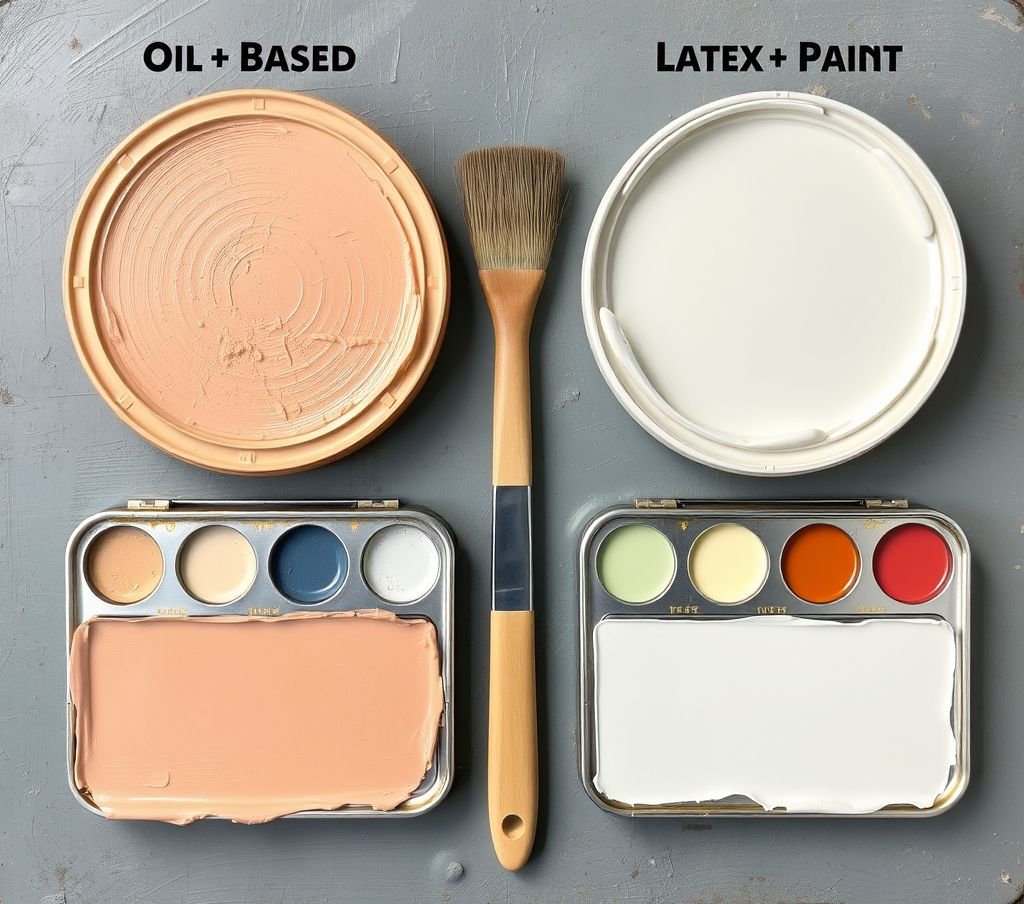The battle of durability vs. convenience—what really protects your home from the outside in?
Can the wrong exterior paint ruin your home’s look—or worse, shorten its lifespan?
Absolutely. Choosing between oil-based and latex paint isn’t just about color or brand—it’s about performance, protection, and long-term value. For homeowners in regions like East Texas, where humidity, sun exposure, and sudden storms collide, this decision matters more than most realize.
Let’s break it down: Oil-based vs. latex—who wins the war on your walls?
🔍 What Is Oil-Based Paint?
Oil-based paint (also called alkyd paint) uses a natural or synthetic oil as its base. It’s been the go-to for decades when durability and smoothness were top priorities.
✅ Advantages:
- Superior durability on surfaces like wood, metal, and trim
- Gloss retention for years without looking chalky
- Great adhesion—sticks even to previously painted or chalky surfaces
- Ideal for moisture-prone areas like window sills and trim
❌ Drawbacks:
- Longer drying time (up to 24 hours)
- Strong odor and VOCs (volatile organic compounds)—requires proper ventilation
- Cleanup requires solvents like turpentine or mineral spirits
- Prone to cracking or yellowing over time, especially in bright sunlight
🔍 What Is Latex Paint?
Latex paint (commonly called water-based paint) uses water as a solvent, making it easier to handle, apply, and clean up.
✅ Advantages:
- Quick drying—can often apply two coats in one day
- Low odor and low VOC options available
- Flexible and resistant to cracking as exterior surfaces expand and contract
- Easy cleanup with soap and water
- More environmentally friendly
❌ Drawbacks:
- May not adhere well to chalking or glossy surfaces without proper prep
- Can be less durable on high-impact or high-moisture areas, unless using premium formulas
- Some fade faster in high-UV zones, though newer acrylic latex formulas have improved
🏡 Which Is Better for Exterior Use?
👑 Winner for Most Homes: Latex (Especially 100% Acrylic Latex)
Why?
- Modern acrylic latex paints now outperform most oil-based paints in exterior applications.
- They’re UV-resistant, expand and contract with temperature changes (critical in East Texas), and adhere to a variety of surfaces.
- Latex paints also resist mildew and mold, a key advantage in humid environments.
But don’t count oil-based paints out just yet…
🎯 When to Use Oil-Based Exterior Paint
- On older homes with oil-based coatings already in place (for compatibility)
- Trim, doors, and high-traffic areas needing ultra-smooth finishes
- Metals prone to rust, where oil paint forms a more protective barrier
- In dry, low-humidity climates, where cracking isn’t a big concern
👷♂️ Real-World Example: Texas Exterior Painting
In East Texas, where heat, moisture, and sun take turns battering your siding, most pros prefer 100% acrylic latex paints for their flexibility and weather resistance.
But for front doors, ornate trim, or wrought iron fences, many still choose oil-based enamel for that glossy, glass-like finish.
🛠️ Key Factors to Consider Before Choosing
| Factor | Oil-Based Paint | Latex Paint |
|---|---|---|
| Drying Time | 6–24 hours | 1–2 hours |
| Cleanup | Mineral spirits | Soap and water |
| Durability | Excellent (but can crack) | Excellent with acrylic formulas |
| VOC Emissions | High | Low or zero-VOC available |
| UV Resistance | Moderate (can yellow) | High with acrylic latex |
| Flexibility | Rigid | Flexible |
| Eco-Friendly | ❌ | ✅ |
📝 Final Verdict
If you’re painting siding, stucco, fiber cement, or wood, latex is the clear winner—especially 100% acrylic latex paints. They’re built to survive harsh weather, expand and contract with the material, and resist cracking or fading.
Use oil-based paint strategically—on doors, trim, or metal—when you need a tougher, glossier finish and don’t mind longer dry times and cleanup.
🔎 Related Article Ideas Worth Exploring
- “Hire Professional House Painters in Tyler, TX”
Painting your home can be a game-changer, but the results depend on who’s holding the brush. - “Deck Painting Protecting and Beautifying Your Outdoor Space”
Constant exposure to weather elements can take a toll on your deck’s appearance and durability - “Cabinet Painting Services in Tyler, Texas”
Cabinet painting services is an excellent solution to transform the look and feel of your space without the expense of replacing your cabinets. - “How Often Should You Repaint Your Home? (Texas Edition)”
Because the Texas sun doesn’t ask for permission—it just burns.



